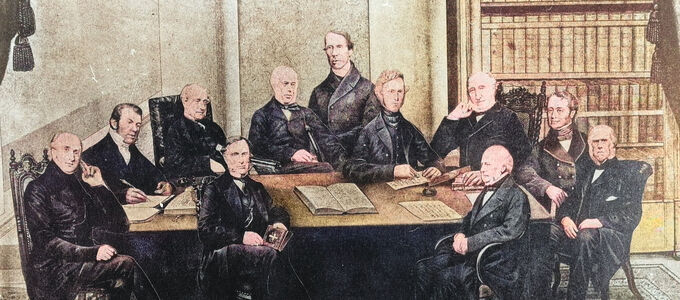
The 14th of July is something of an apostolic holy day. But its history contains some surprises. And as it commemorates the event this year, the New Apostolic Church takes a rather special perspective.
A kind of three-stage plan had developed for the renewed personal occupation of the Apostle ministry in the Catholic Apostolic movement: the first part was the calling of the Apostles, then their consecration, and finally their mission. But things turned out differently than expected.
A date with a special background
The callings had begun on 31 October 1832. And a date had long been prophesied for the consecration too, namely 14 July 1835. The background for this was an interlude from the book of Revelation. And another thing: the 15th of July was traditionally known as the Day of the Twelve Apostles, a half-forgotten holy day from the Middle Ages that commemorated the sending of the twelve Apostles by Jesus.
But “mission 2.0” was problematic: neither was the circle of the twelve Apostles of the modern age complete, nor was the circle of the seven London churches, and according to the prophecies, these were to play a special role in this event.
No time like the last minute
Things were quite hectic in July 1835. The governing body, the Council of Zion, was meeting daily by the end of it. And ad hoc sermons in the Paddington district and in the more upscale Westminster quarter led to the establishment of congregations that had not yet materialised—or at least to the appointment of their future rectors.
But by the afternoon of the expected date, there were still only eleven Apostles. The twelfth did not want to accept his calling. In keeping with the biblical example of the election of Apostle Matthias, the decision of which of two candidates should be called was decided by casting lots.
In service to all
Now all the signs had been fulfilled: by the evening of 14th July 1835, each of the seven London Angels (these were congregational leaders with the rank of a Bishop) laid hands upon each of the twelve Apostles. By way of this consecration, the Apostles were released from their previous duties in congregational work so that they could now concentrate on the leadership of the church as a whole.
To this end, the Apostles drafted the “Great Testimony”, which called on clergy from around the world to submit to the apostolate. And then they waited for the signal to begin their collective mission—but it was never to come.
Church in crisis
The appeal to the global church of Christ fell on deaf ears. And worse still: one Apostle left, the apostolic unity broke down—and with it the prerequisite for their collective mission. So it was that, from around 1840 onward, the Catholic Apostolic movement fell into crisis.
Things only really started to improve again when the apostolate began to take concrete action once more in 1847—with the apostolic laying on of hands, which is better known today as the act of “sealing”. The consecration that had taken place 13 years before nevertheless remained an occasion for remembrance, which was celebrated from 1852 onwards.
Taking a stand against idolatry
The New Apostolic Church likewise commemorates the 14th of July 1835 as a milestone in the renewed personal occupation of the Apostle ministry. However, tomorrow’s Sunday divine service has a special perspective on the subject.
The Apostle ministry is of decisive importance, however, as the Divine Service Guide emphasises, those who bear this ministry reject any sort of veneration or idolisation of their own person. Apostles of Christ profess their humanity and sinfulness, and endeavour to perform their duties in humility. And the believers themselves are firmly opposed to idolatry, and give honour to God alone.
Photo: The Apostles of the Catholic Apostolic Church (without Duncan MacKenzie; historic photo montage, subsequently coloured)




